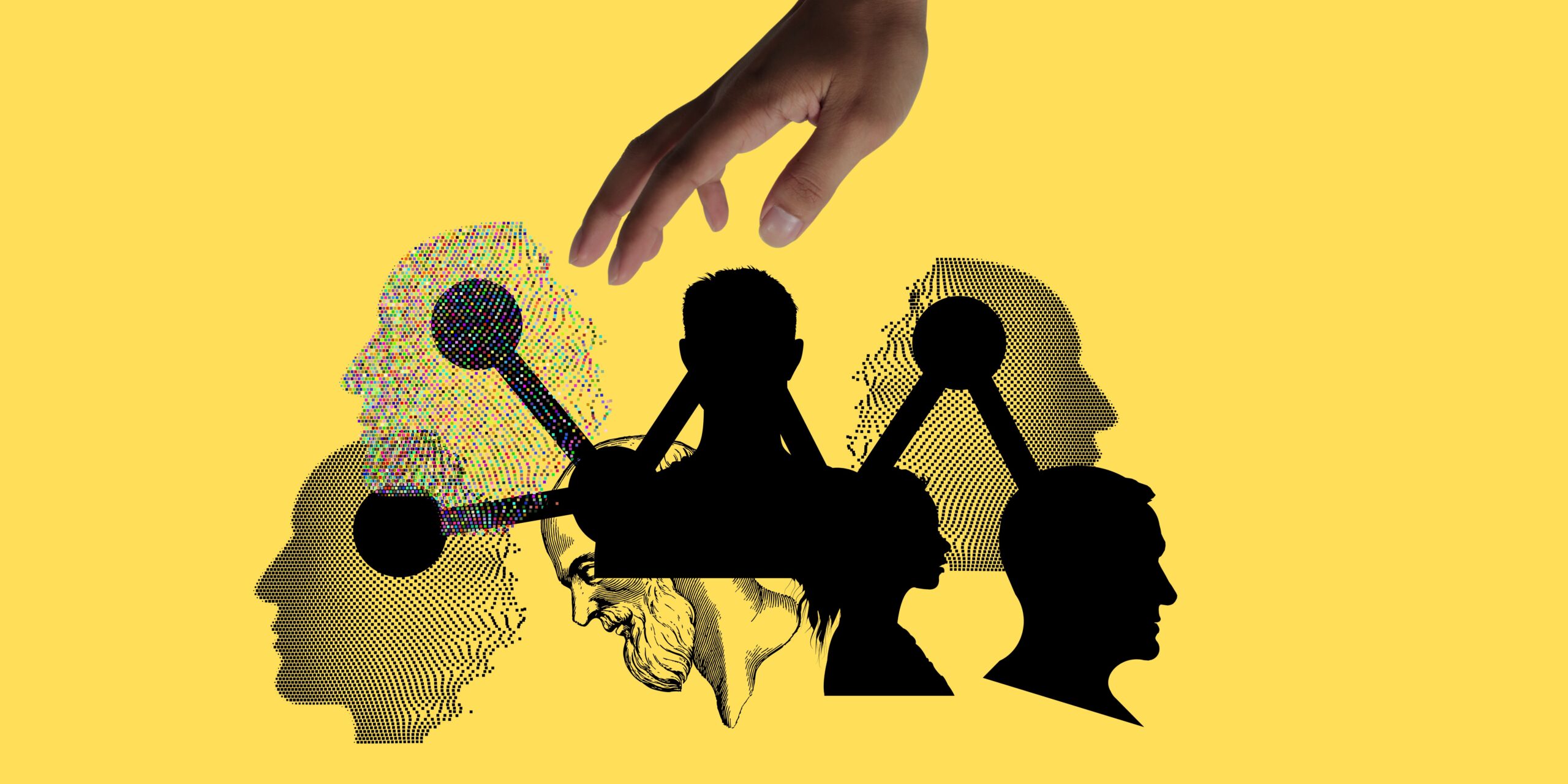Niccolo Machiavelli (1469-1527) was a diplomat from Florence. He traveled to the courts of Europe and saw directly how the leaders he supported arose and then met their demise.
He wrote The Prince in an effort to get along with the new king (Machiavelli, 1966).
To put it briefly, The Prince is a book with tips on how to get and keep power. Apparently, there are no standard ideals like faith, respect, or humanity in it. In other words, one does what is convenient for him.
I, however, disagree.
Machiavelli wasn’t really a Machiavellian. In fact, he loved his state in a way that was not typical of a Machiavellian. Moreover, his work could also be considered insightful, to a degree.
This particular attribute of his is what makes Machiavellianism a truly distinct personality trait. In some ways, this trait is practically helpful. In other ways, Machiavellianism is destructive.
Before we go into further investigation, let us first define it.
Definition of Machiavellianism
Based on the works of Niccolo Machiavelli, Machiavellianism is a tendency towards intentionally and strategically manipulating others to gain and keep power and control (Wilson et al., 1996).
However, other researchers characterize it differently. For example, Collison et al. (2018) describes Machiavellianism as a trait concerned with planning, being able to delay satisfaction, and being hostile toward others (Collison et al., 2018).
So, one can view Machiavellianism as both a negative and a positive trait.
Christie and Geis (1970) were the first psychologists to look at Machiavellianism as a way to explain why people behave differently. They came up with a set of tests for ‘Mach’. People who did well on the test – or high-Machs – and people who did poorly – or low-Machs – behave differently in many other areas. These areas are diverse. They range from jobs they choose to how well they do at games where they have to work together.
At this point in time, Machiavellianism is part of the dark tetrad. The Dark Tetrad is a group of dark personality traits that have some overlap: narcissism, psychopathy, Machiavellianism, and sadism. Prior to that, Machiavellianism was one of the three parts of the Dark Triad, along with narcissism and psychopathy.
I have already talked about sadism.
Paulhus and Williams (2002) were the first to talk about this group of personality traits. Fundamentally, these concepts are different, even though they all have tendency towards cruelty and hostility.
Core Features of Machiavellianism
Machiavellianism is different from the other three traits in two important ways.
- People who believe in Machiavellianism are pessimistic, which makes them think that most people, if not all people, only care about themselves.
- People who are high in Machiavellianism are flexible in how they deal with others and how they try to trick them (Bereczkei, 2015).
Researchers led by Bereczkei and others discovered that people who are high in Machiavellianism have brain structures that make them cautious when interacting with others. These individuals also have brain changes that show Machiavellianism is linked to being more sensitive to rewards and delaying satisfaction (Bagozzi et al., 2013; Verbeke et al., 2011).
So, having understand what Machiavellianism is, I will now detail experiments that assess this trait’s influence on social life.
Social Functioning of Machiavellian Individuals
Structured vs Non-Structured Environments
In 1993, Shultz looked at how well stockbrokers from companies with different organizational structures did at making sales.
In more organized companies, workers usually follow a proper sales guidebook. Plus, they are given possible clients, and it is almost impossible to change deals to change profits.
On the other hand, there are also companies that are not as tightly organized. These companies allow their employees to “wheel and deal.” Employees are given a short suggestion pamphlet instead of a sales guidebook, they can get clients from anywhere, and there are lots of ways to cheat on profits.
In short-term lab tests, this business structure is more like the kind of setup that lets high-Machs work.
Shultz (1993) divided the range of Mach scores at the middle point to create groups for high-Mach and low-Mach scores.
The findings were interesting.
When companies were not very organized, high-Machs had more clients and made twice as much in fees as low-Machs. On the other hand, Low-Machs made twice as much as high-Machs in organizations with tight structures.
This demonstrates how people high in Machiavellianism can do better than others in an environment where the rules are lax.
Trustful vs Distrustful Bosses
In 1976, Harrell and Hartnagel gave both high- and low-Machs a chance to steal from a worker-supervisor. In one situation, the boss was very sure that the worker would steal, so he or she kept an eye on them during the session. In the second situation, the boss was more trustful and told the worker that he or she didn’t need to be watched as closely.
A lot of people stole from the boss they didn’t trust. The gaps between high- and low-Machs weren’t that big.
High Machs, on the other hand, were much more likely to steal from the trusted boss and also stole more than low Machs. Furthermore, overall, they stole more money than people low in Machiavellianism.
This indicates a greater tendency of those high in Machiavellianism to engage in deceitful behavior in situations where the authority is unsure.
Flexibility and Leadership
In 1980, Drory and Gluskinos looked into how Machiavellianism could be used as a personality style for leadership in controlled task groups.
As part of the study, the subjects were put in charge of task groups that built toy cube bridges in both good and bad conditions. It was shown that the boss had a lot of power when things were going well. In the bad case, on the other hand, the boss was shown to not have much power to lead.
The result of the high Mach led group was the same as that of the low Mach led group.
However, there were big differences in how the groups interacted with each other.
Leaders high in Machiavellianism gave out more directions and did less to ease stress.
The low Machs, on the other hand, behaved the same way in both good and bad cases. Conversely, the high Machs were less directive and asked for help more when things were not favorable.
The study demonstrates the flexibility that is associated with Machiavellianism.
Difference between Machiavellianism and Psychopathy
There exists a major problem in differentiating Machiavellianism.
For one, existing tests for Machiavellianism don’t match up with how experts rate the idea (Miller et al., 2017). Secondly, these tests are almost identical to tests for psychopathy (Vize et al., 2018).
The main issue is that current tests of Machiavellianism are linked to disinhibition tests that look at traits like impatience, laziness, failure, and not sticking with something even when it gets hard. This is a problem because Machiavelli wrote about how to get and keep power, status, and control through caution, calculation, and the careful, thoughtful consideration of risk. These are the exact opposites of being disinhibited. Thus, there is a major issue of conceptually differentiating the two traits.
Based on Collison et al. (2018), both categories should have high levels of opposition, but they should have different relationships with disinhibition. So, Machiavellian individuals would have high levels of restraint while psychopathic people having low levels.
While the research is still going on, it is important to isolate Machiavellianism as a completely separate construct.
Conclusion
Machiavellianism is a ‘dark’ personality trait which includes a manipulative style of behavior in social interactions. It also shows features of preoccupation with gaining power. However, the trait is often misunderstood at its core. Manipulation cannot be considered ‘completely bad’ behavior in various situations. Moreover, delaying gratification is actually considered to be an indication of mental maturity in individual.
Unfortunately, as described above, Machiavellianism is – often wrongly – equated to certain psychopathic behaviors. Further research is, however, required to measure the trait’s intensity. Research in the line of Collison et al.’s (2018) work, in particular, could give a better understanding of the trait and the personality it is most intense in.
References
- Bagozzi, R. P., Verbeke, W. J., Dietvorst, R. C., Belschak, F. D., van den Berg, W. E., & Rietdijk, W. J. (2013). Theory of mind and empathic explanations of Machiavellianism: A neuroscience perspective. Journal of Management, 39(7), 1760-1798.
- Bereczkei, T. (2015). The manipulative skill: Cognitive devices and their neural correlates underlying Machiavellian’s decision making. Brain and cognition, 99, 24-31.
- Christie, R., & Geis, F. L. (2013). Studies in machiavellianism. Academic Press
- Collison, K. L., Vize, C. E., Miller, J. D., & Lynam, D. R. (2018). Development and preliminary validation of a five factor model measure of Machiavellianism. Psychological assessment, 30(10), 1401.
- Drory, A., & Gluskinos, U. M. (1980). Machiavellianism and leadership. Journal of Applied Psychology, 65(1), 81–86. https://doi.org/10.1037/0021-9010.65.1.81
- Harrell, W. A., & Hartnagel, T. (1976). The impact of Machiavellianism and the trustfulness of the victim on laboratory theft. Sociometry, 157-165.
- Machiavelli, N. (1966). The Prince (New York: Bantam, Original work published 1513).
- Miller, J. D., Hyatt, C. S., Maples‐Keller, J. L., Carter, N. T., & Lynam, D. R. (2017). Psychopathy and Machiavellianism: A distinction without a difference?. Journal of personality, 85(4), 439-453.
- Paulhus, D. L., & Williams, K. M. (2002). The Dark Triad of personality: Narcissism, Machiavellianism, and psychopathy. Journal of Research in Personality, 36, 556-563
- Shultz, C. J. (1993). Situational and dispositional predictors of performance: a test of the hypothesized Machiavellianism structure interaction among sales persons 1. Journal of Applied Social Psychology, 23(6), 478-498.
- Verbeke, W. J., Rietdijk, W. J., van den Berg, W. E., Dietvorst, R. C., Worm, L., & Bagozzi, R. P. (2011). The making of the Machiavellian brain: A structural MRI analysis. Journal of Neuroscience, Psychology, and Economics, 4(4), 205.
- Vize, C. E., Lynam, D. R., Collison, K. L., & Miller, J. D. (2018). Differences among dark triad components: A meta-analytic investigation. Personality disorders: Theory, research, and treatment, 9(2), 101.
- Wilson, D. S., Near, D., & Miller, R. R. (1996). Machiavellianism: a synthesis of the evolutionary and psychological literatures. Psychological bulletin, 119(2), 285.
I am a Clinical Psychologist and a Lecturer of Psychology at Government College, Renala Khurd. Currently, I teach undergraduate students in the morning and practice psychotherapy later in the day. On the side, I conjointly run Psychologus and write regularly on topics related to psychology, business and philosophy. I enjoy practicing and provide consultation for mental disorders, organizational problems, social issues and marketing strategies.





